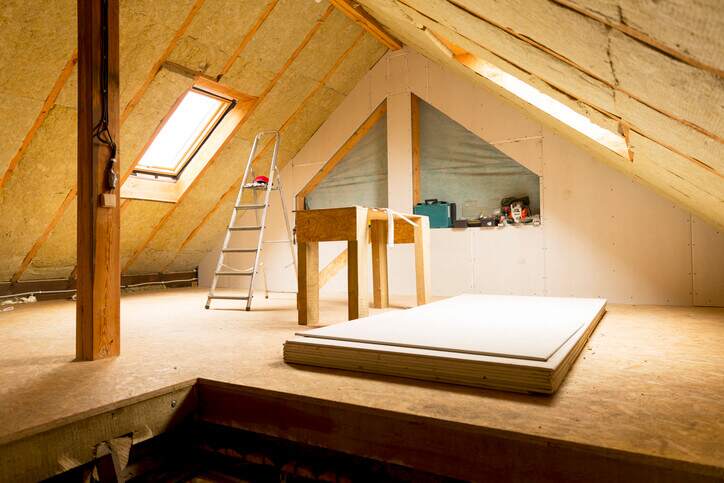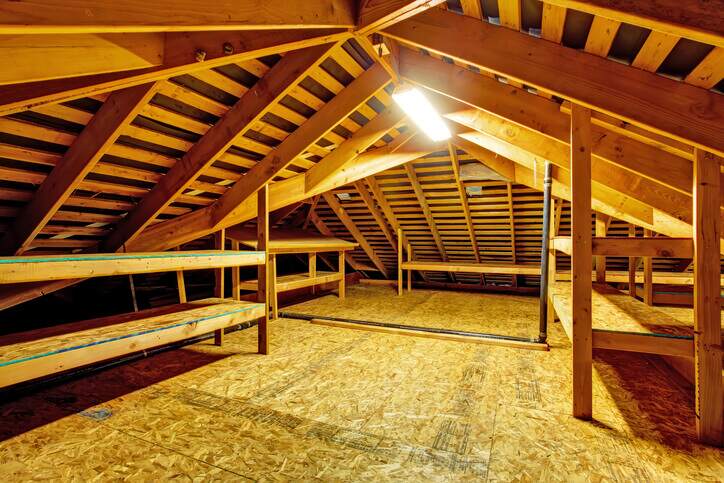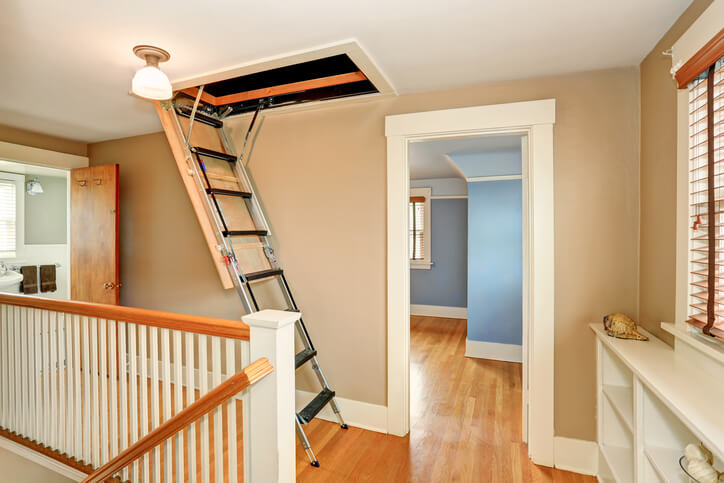
Almost every house has a loft. Big or small, they have the potential to become a selling point in your home – not to mention a useable space for homeowners to enjoy in the here and now. Does your loft have untapped potential? Let’s find out. Explore these five low-cost improvements and why they can maximise value.
How much value can a loft add?
For many homeowners, the go-to option for improving a loft is to convert it. A standard loft conversion in a UK property (with a double bedroom and bathroom) can add as much as 22% to the value of a three-bedroom, one-bathroom house. So, they are definitely a valuable investment.
However, loft conversions are time-consuming and costly. For those who don’t see the appeal, there are other low-cost ways to make a loft value-adding.
For example, a house with a boarded loft is more appealing to buyers and helps it sell faster. Boarded lofts also tend to be more energy-efficient, which can increase the overall value of the home if it positively impacts the EPC (energy performance certificate) rating.
5 Low-cost improvements for your loft
Storage space is essential in a home. Without a conversion, the next best thing is to use your loft for storage. These five low-cost loft improvements can add value, boost desirability, or maximise the potential of your home with little investment.
1. Boarding the floors

Boarding a loft is a small change that makes a big difference. First up, it’s safer. You can walk across the entire floor of your loft once it’s boarded. Secondly, it increases the storage space in your loft by 50%+, as you can keep items anywhere.
Thirdly, it maximises the potential of the space. Homeowners tend to use the loft for storing Christmas decorations. But once it’s boarded, it becomes an extra room. Kids can use it as a games area or a space to practice their new drumkit.
Finally, it’s an investment to reduce heating bills. The extra insulation you gain from boarding your loft could save as much as £590 per year, according to 2023 research.
2. Creating storage under the eaves
Loft eaves are the spaces where the roof slopes down to the floor. This area is often underutilised and cluttered, but it’s the best place to create a neat and tidy storage solution. Installing custom-fit shelves and cabinet doors to the eaves maximises storage space while keeping the general area clear.
3. Adding more light

Most lofts have a single hanging light bulb that barely lights up the space. In the future when it comes to selling, potential buyers are less likely to see a loft as an extra room when they can’t visualise the space properly. Installing bigger, better lights costs a little, but offers a lot in return.
4. Installing ceiling-mounted storage racks
Maximise the floor space in a loft with ceiling-mounted storage racks. These keep items off the floor and increase the available space for other activities or further storage. Just remember to check the maximum support weight of your joists before installing ceiling storage.
5. Upgrading the loft hatch

Accessibility is key for maximising the potential of your loft. Homeowners are less likely to use a loft when the access is poor or even unsafe. Potential buyers aren’t even going to explore the loft and be lured by its value if there’s no easy way to enter it. Upgrading the loft hatch to a safe solution can cost as little as £150 in 2024, according to Checkatrade, but it can boost your home’s desirability significantly.
Conclusion
You can never have too much storage space. Lofts offer the best solution to creating useable storage space in a property, but most homeowners don’t think it’s worth the investment.
Yet the biggest investment to make a loft more attractive is time, not money. Most improvements are inexpensive but make a big difference. The key thing to remember when making any changes to a loft is to make the space look homely, inviting and useable.
Thinking about getting your home on the market? Get an instant online valuation on your property today or book a valuation with one of our local experts to see what it’s worth as it is.